
Station Name: OLD NORTH ROAD[Source:
Nick Catford]
north_road_old5.jpg) Staff pose for the photographer at Old
North Road station c1900. Note the hut on the right, this stands close to the position of the layer signal box.
Photo from John Mann collection 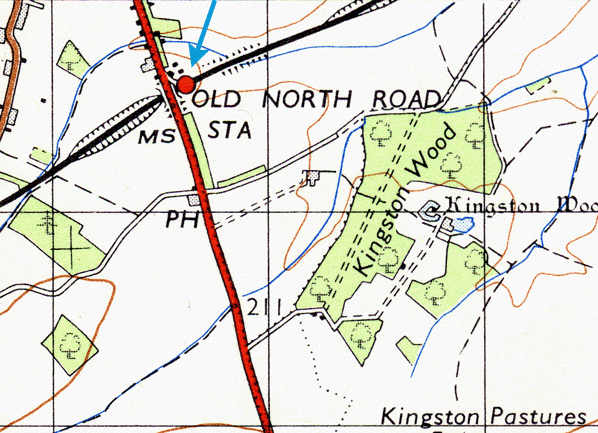 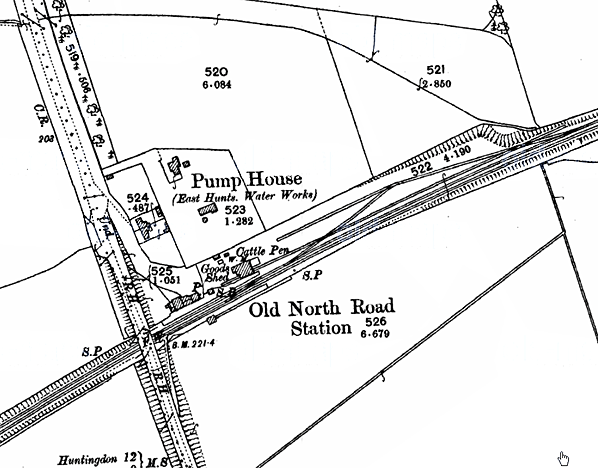
1902 1:2,500 OS map. All the facilities were on the down side with access to the goods yard from both directions. The yard comprises two sidings with one passing a cattle dock and pens before running through the goods shed. The other siding served the coal yard. The signal box is on the down platform between the goods shed and the station building.
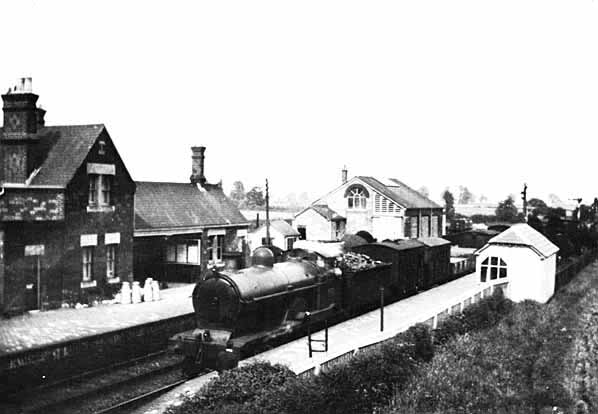 north_road_old3.jpg)
Old North Road station looking south-west from the up platform c 1960s.
Photo from John Mann collection north_road_old4.jpg) Old North Road station looking north-east from the down platform c 1960s.
Photo from John Mann collection 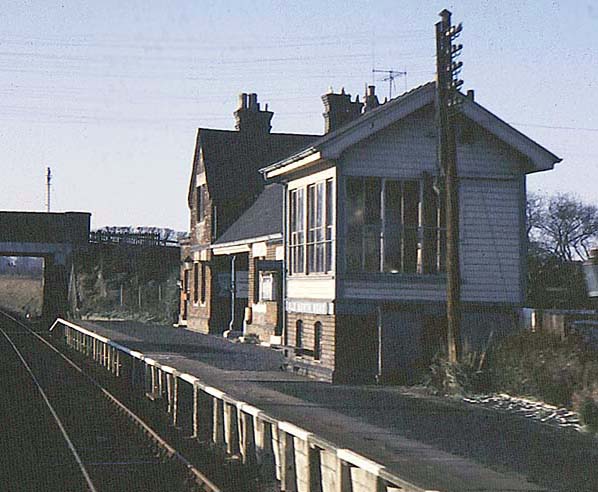
Old
North Road station seen from an Oxford bound train in December 1967
Photo by Geoff Skelsey 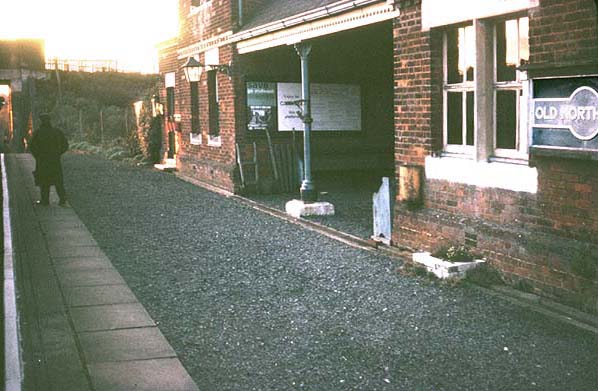
Old
North Road station seen from a Cambridge train in December 1967 during the
last week before closure Photo by Nick Catford north_road16.jpg)
Old North Road station seen from the road bridge in July 1973. 3½ years after closure apart from track lifting little else has changed.
Photo by John Mann north_road17.jpg) Old North Road station looking south-west in July 1973.
Photo by John Mann 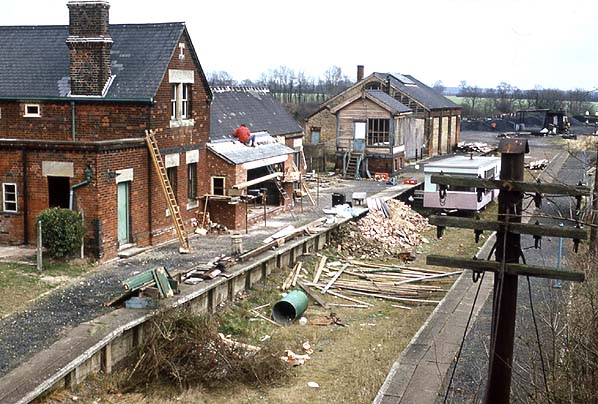
Old
North Road station looking north-east from the A119 road bridge in March 1976
Photo
by Nick Catford
road5.jpg)
Old
North Road station looking north-east in March 2009.
Photo by Dave Lane from Wikipedia, reproduced under creative commons licence north_road9.jpg)
Old North Road station looking north-east along the down platform in September 2013.
Photo by Robert Davidson north_road10.jpg) Old North Road station looking south-west in September 2013.
Photo by Robert Davidson north_road12.jpg) At the east end of Old North Road station the platform had been demolished with a new building across the track bed. This building has now been demolished and the end of the platforms have been rebuilt. The goods shed is seen in the centre; the other building are new. The LMS style 'Hawkseye' sign is a reproduction. (September 2013)
Photo by Robert Davidson Click on thumbnail to enlarge
|
 The goods goods yard was also on the down side and to the east of the station. It comprised two sidings one of which passed through a substantial brick goods shed built to a typical LNWR design; this siding terminated behind the down platform. The other siding ran behind the goods pens serving the coal yard. Cattle pens were sited at the east end of the goods shed. Access to the yard was controlled by a signal box sited on the down platform a few yards to the east of the station building. The yard closed on 19 April 1965.
The goods goods yard was also on the down side and to the east of the station. It comprised two sidings one of which passed through a substantial brick goods shed built to a typical LNWR design; this siding terminated behind the down platform. The other siding ran behind the goods pens serving the coal yard. Cattle pens were sited at the east end of the goods shed. Access to the yard was controlled by a signal box sited on the down platform a few yards to the east of the station building. The yard closed on 19 April 1965.
 In 1955 The Railway Modernisation Plan proposed improvements
in cross country facilities between Oxford and Cambridge with
the aim of maintaining a link between the major main line railways
outside the congested Greater London area thereby allowing freight
traffic to be transferred between three railway regions and easing
the burden on London marshaling yards. Within a few years the
policy changed and the line was not upgraded with the Bletchley
flyover remaining as a monument to the fruitless proposal.
In 1955 The Railway Modernisation Plan proposed improvements
in cross country facilities between Oxford and Cambridge with
the aim of maintaining a link between the major main line railways
outside the congested Greater London area thereby allowing freight
traffic to be transferred between three railway regions and easing
the burden on London marshaling yards. Within a few years the
policy changed and the line was not upgraded with the Bletchley
flyover remaining as a monument to the fruitless proposal.
 Track lifting of the Bedford - Cambridge Line began on 13th August
1968. Track was left in place between Potton and Gamlingay pending
negotiations for preservation by the Sandy & Potton Steam
Railway Society. Unfortunately the Society was unable to raise
sufficient funds and the 5.25 miles of track was eventually lifted.
One section of the bed between Lords Bridge Station and the junction
with the GER has become the site of a very long radio telescope
belonging to the
Track lifting of the Bedford - Cambridge Line began on 13th August
1968. Track was left in place between Potton and Gamlingay pending
negotiations for preservation by the Sandy & Potton Steam
Railway Society. Unfortunately the Society was unable to raise
sufficient funds and the 5.25 miles of track was eventually lifted.
One section of the bed between Lords Bridge Station and the junction
with the GER has become the site of a very long radio telescope
belonging to the 
north_road_thumb12.jpg)
north_road_thumb13.jpg)
north_road_thumb14.jpg)
north_road_thumb15.jpg)
north_road_thumb18.jpg)
north_road_thumb6.jpg)
north_road_thumb7.jpg)
north_road_thumb8.jpg)
north_road_thumb13.jpg)
north_road_thumb5.jpg)
north_road_thumb11.jpg)

 Home Page
Home Page